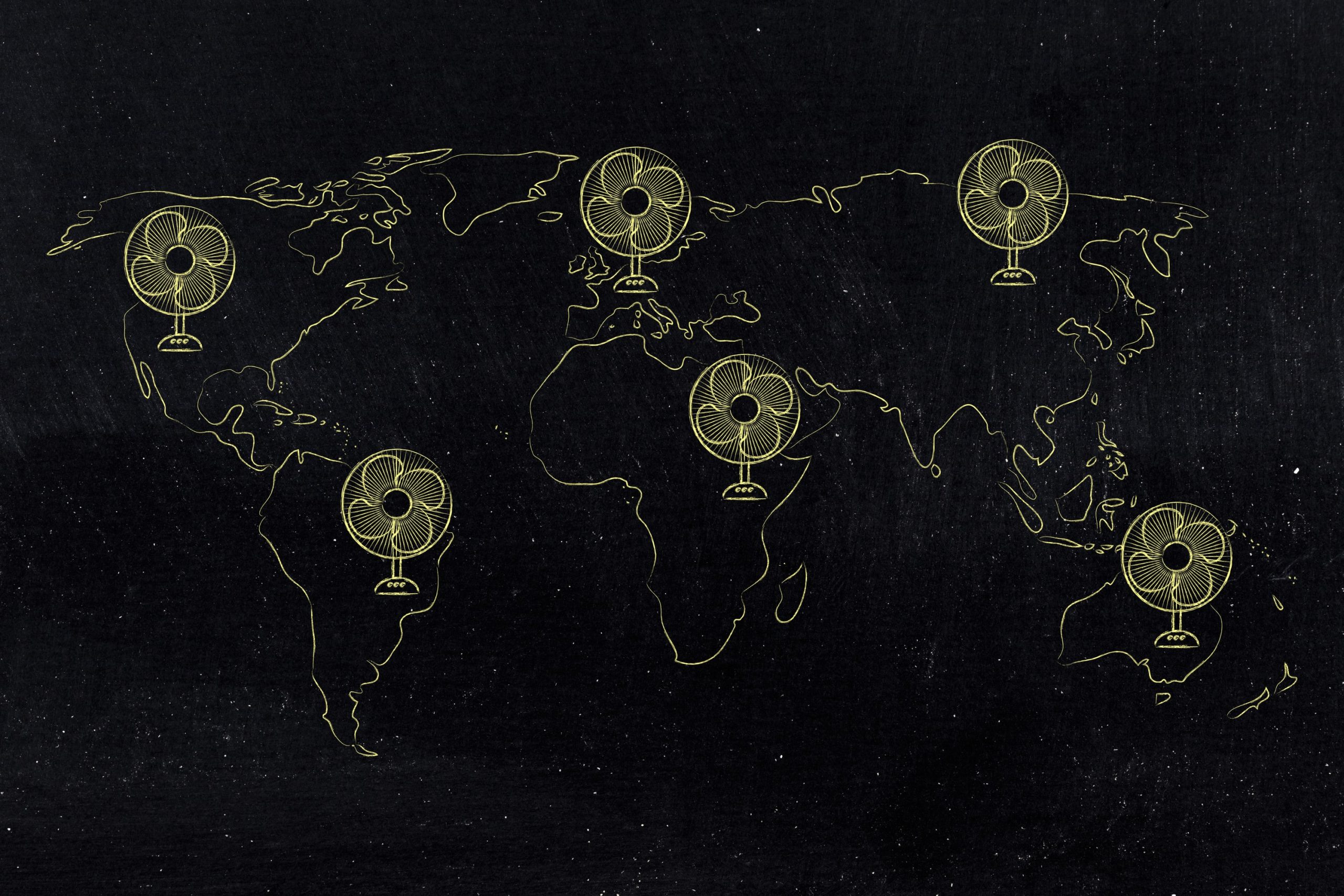5 Reasons Why Your HVAC Unit is Loud Do you find your HVAC unit excessively…

Air Conditioning the World
There was a recent article in the international edition of the South China Morning Post. It asked if South Korea is such a high-tech country, why don’t more people there have air conditioning? This question arose because there’s an extreme heatwave happening in Korea right now. So extreme that is has killed at least forty-two people so far.
You would think that a country with one of the highest rates of digital literacy in the world would have the air conditioning needed to ride out a heatwave. According to the SCMP, as of 2013, only 67.8 percent of the South Korean population had an air conditioner in their home.
So why is that? Well, the answer has to do with electricity and the energy needed to power an air conditioner. South Korea has difficulty consistently generating the amount of electricity needed to satisfy all the demand of their population.
During a previous heatwave in August 2013, the South Korean government had to ban public buildings from using their air conditioners for three days. That’s because six of their nuclear plants had been forced to go offline for various reasons. Without those plants, they simply couldn’t generate enough electricity to keep all those air conditioners running.
See Also: Step 1 to a Lower Energy Bill in Summer: Decrease the Heat
Supply and Demand
According to SCMP, the reason that many South Koreans don’t currently have air conditioning in their homes has to do with electricity prices. This is because of the high demand and limited supply of electricity. South Korea charges different widely rates for electricity depending on how much is used.
This means that a home without air conditioning might have an electric bill as low as $22 per month. A home with air conditioning will be charged at a significantly higher rate due to higher usage. This can easily lead to a power bill that’s TEN TIMES as much.
As a result, many South Koreans who would otherwise be able to afford air conditioning can’t. Their monthly utility bills would be so much higher. It’s the limited supply and high price of electricity that keeps more South Koreans from air conditioning their homes.
See Also:Understanding How Your Energy is Billed Can Save You Money
It’s Not Just a South Korean Problem
The situation in South Korea is significant to the world as a whole. Experts from organizations like the International Energy Agency (IEA) predict that there is a growing demand for air conditioning around the world. This may lead to a serious energy crisis in the future. The problem is that air conditioning can consume a lot of electricity. There just isn’t enough electricity to go around.
The United States has been the world leader in the amount of energy used for cooling. According to the U.S. Energy Information Administration, the U.S. consumed about 355 billion kilowatthours (kWh) of electricity. And that is just for cooling residential and commercial buildings in 2017. That’s nearly 10% of all the electricity purchased in our country that year.
See Also: Football Goes Green with Energy-Efficient Stadiums
International Energy Crisis
While the US has long led the world in consumption of electricity for air conditioning, other countries are catching up. According to Stan Cox, writing for The Guardian newspaper, in 2020 China is expected to become the new world leader in electricity used for air conditioning.
The rest of South and Southeast Asia won’t be far behind. According to the IEA, by 2050 half of the world’s households with air conditioning will be located in China, India, and Indonesia.
The spread of air conditioning around the globe is already leading to summertime energy shortages. The Guardian reports that China has a shortage of 30-40 gigawatts this summer. This has forced the country to ration energy and close factories.
In India, some areas have seen all residential electricity shut off for up to 16 hours a day. This is due to a 17 gigawatt shortfall. It’s easy to see how this is linked to air conditioning when you consider that currently 40% of all electricity consumed in the city of Mumbai is used for air conditioning.
The IEA warns that if the world stays on its current track, by 2050 the amount of electricity consumed for space cooling will be more than three times what it is now. Just powering those additional air conditioners will require the world to generate more electricity than the U.S., European Union, and Japan combined generate today.
See Also: Demand Response Programs Use Smart Thermostats to Manage Power
Energy Efficiency is the Key to Preventing an Energy Crisis
So what can we do to ensure that we’ll have enough energy to keep our world running in the future? One of the major keys is increasing energy efficiency.
If we can significantly increase the energy efficiency of the new air conditioners, then we can greatly decrease the amount of electricity needed to keep up with the new demand for cooling.
Currently, as the IEA explains, even new air conditioners come in a wide range of efficiencies. The average new air conditioner being installed in the EU or Japan is 25% more efficient than the average new AC installed in the U.S. or China.
Around the world the average efficiency of new air conditioners being sold is about half as high as what’s currently available. And that’s not even taking into account the potential for advancing technology to produce even more efficient air conditioners in the future.
The IEA states that if we can double the average air conditioner efficiency by 2050, then we can decrease the amount of electricity needed for cooling by 45%. This is compared to the amount needed if we stay on our current track.
And that can help to ensure we can keep the lights on and the cool air flowing—for everybody!


